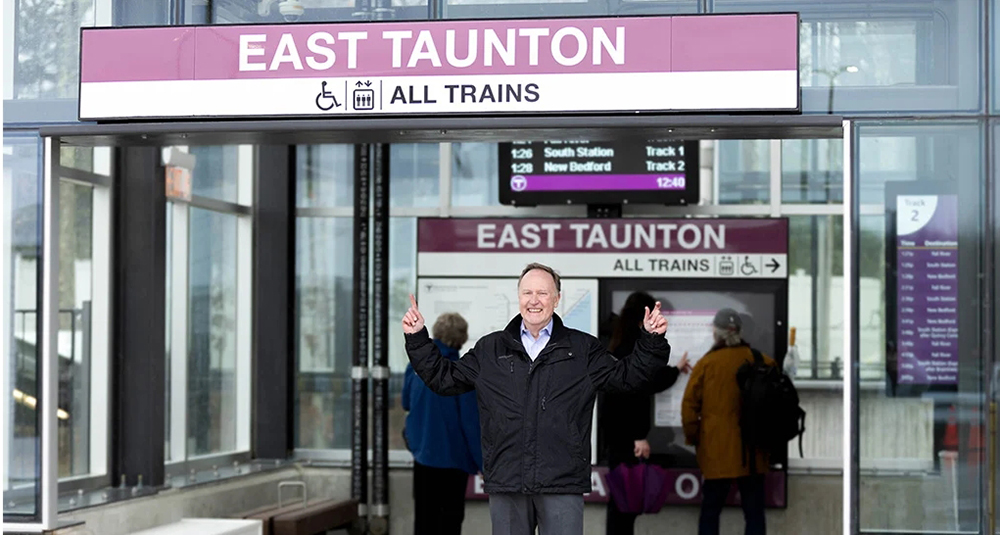News:
Spotlight Content
Posted: November 19, 2007
The cost to retrofit a rooftop with the required fall protection is more reasonable than expected
"It was a freak accident" That was the quote from the wife of a man that had been working for only six months in the window cleaning business and had just fallen 6 floors from an apartment complex in Utah. However the scene behind her in the news paper photo tells an entirely different story. The workers safety line and his outrigger equipment lay crumpled on the sidewalk indicating he had not tied any of this equipment back to secure anchorages.
The last thing a property manager, building owner, or contractor wants to hear is that an accident has occurred at one of their buildings. Yet every day in this country that is exactly what happens, and Federal OSHA says that the #1 cause of accidents in the workplace is falls.
After the initial reaction to insure the injured person is cared for and the site secured people will start to ask, "Could this incident have been prevented"? In every case the answer will of course be "Yes"! Better training, competent technicians, warning labels, proper safety equipment, and systems that are simple to use and understand are common solutions to prevent accidents.
OSHA will also questions, and if they find violations of the current codes they will impose severe financial penalties on the parties involved. In addition the injured party, or the surviving family, will also be able to pursue the matter in civil court and it will not take long to find out if the buildings fall protection plan did not meet the current OSHA and ANSI work place standards. And even though the husband in the case above did not follow proper rigging practices, and most likely did not receive adequate training, the building owner will be found at fault under OSHA General Duty Clause Sec 5 Published 12/29/1970 for not providing a workplace safe from recognized hazards.
Buildings must provide anchorages for tie backs, and the technicians suspended over the side or working in unprotected areas must tie back to these anchorages. This basic and even shall we say, common sense rule is clearly written in the current OSHA and ANSI codes. Unfortunately the reality is this does not exist or happen. Your building is very likely not in compliance with this basic requirement and although your vendor will make every effort to work safe, perhaps stringing cable around your penthouse, or slinging cables around your stairwell, it will be difficult for them to meet the requirements on each and every location he has to work. So he will rely on his experience to rig his equipment the best he can. Sometimes it works out, sometimes tragically it does not!
Buildings not meeting the current codes are exposing themselves to astronomical financial exposure in the event of an accident. Catastrophic accidents generally settle in the $10s of millions with the building owner paying the lion's share of these settlements. Understanding and meeting the current codes on fall protection is crucial to any building where exterior building maintenance is performed. When a property does comply with these regulations the contractor has adequate anchorages to secure his equipment and the inevitable accident is adverted.
Anchorages must be designed by a company experienced in such design with a full understanding of the codes including the proper use of the system. An engineering stamp alone is little protection to an ill designed and poorly installed system, even companies that say they provide this type of service can be suspect of not understanding or misinterpreting the codes. A properly designed system should be able to accommodate both transportable scaffolds and suspension equipment like the (RDS) rope descent systems commonly used by window cleaners. It should also be simple to understand and use by the technicians performing the work.
It can be confusing to anyone not experienced in the proper layout of anchorages and proper rigging practices when proposals are delivered and confusing lines crisscross the drawing. If it is not clear to you it may not be clear to the people who need it most.
To make an informed decision a property manager should get information about the OSHA and ANSI codes their building should be complying with, and take a few moments to look at these codes. Then ask themselves the tough questions.
How will a worker access every drop on my building? How many RDS workers can I have over the side of my roof and still provide independent anchorages for all of them? Where do I attach a ballasted outrigger like used with a suspended scaffold system, and the required safety lines for each worker? Can this be shown to work on every drop location? Remember that each and every tie back must be secured to an independent anchorage, not sharing a cable, or other device that is also being used as an anchorage. An example would be a staging consisting of 2 suspension points and two workers would require a minimum of 4 independent tie-backs. If a cable was strung between 2 anchors and a tie back line attached to that cable, the system would now require 8 independent anchors within 15 degrees of perpendicular.
Confusing to say the least! The solution is to have a rooftop inspection performed by a competent fall protection company, get a few opinions, and get yourself educated on the facts. You might be surprised to find out that what you are told by some companies is really economically driven and not in line with the facts. The good news is the man in Salt Lake lived to see his family, and you will find in most cases the cost to retrofit a rooftop with the required fall protection is more reasonable than expected and the entire process is a lot less painful than the alternative.
Bob Zeolla is president of American Anchor, Foxboro, Mass.
Tags:
Spotlight Content
MORE FROM Spotlight Content
Check out the New England Real Estate Journal's 2025 Fall Preview Spotlight
NEREJ’s Fall Preview is Out Now!
Explore our Fall Preview Spotlight, featuring exclusive Q&As with leading commercial real estate professionals and in-depth byline articles on today’s most relevant market topics. Gain insight into the trends, challenges, and opportunities shaping New England’s commercial real estate landscape this fall.
Explore our Fall Preview Spotlight, featuring exclusive Q&As with leading commercial real estate professionals and in-depth byline articles on today’s most relevant market topics. Gain insight into the trends, challenges, and opportunities shaping New England’s commercial real estate landscape this fall.

Columns and Thought Leadership

30 years on South Coast Rail: A journey to connect Southeastern Mass. with commuter rail - by Rick Carey
On March 24, 2025, a dream more than three decades in the making became a reality with the launch of the Massachusetts Bay Transportation Authority’s (MBTA) South Coast Rail commuter service. This milestone marks the completion of a project that overcame numerous starts and stops, including changes in leadership

How do we manage our businesses in a climate of uncertainty? - by David O'Sullivan
These are uncertain times for the home building industry. We have the threat of tariffs mixed with high interest rates and lenders nervous about the market. Every professional, whether builder, broker, or architect, asks themselves, how do we manage our business in today’s climate? We all strive not just to succeed, but

How long should I hold a property for it to qualify as an investment property in connection with a 1031 tax-deferred exchange? - by Brendan Greene and Mark McCue
Internal Revenue Code (IRC) Section 1031 provides “No gain or loss shall be recognized on the exchange of property held for productive use in a trade or business or for investment if such property is exchanged solely for property of like kind which is to be held

Shallow-bay wins on 495/128: A renewal-driven market with a thin pipeline - by Nate Nickerson
The Boston industrial market entered mid-2025 in a bifurcated state. Large-block vacancy remains elevated, while shallow-bay along the 495/128 corridor continues to prove resilient. Fieldstone’s focus on this geography positions us squarely in the middle of a renewal-driven, supply-constrained










.png)